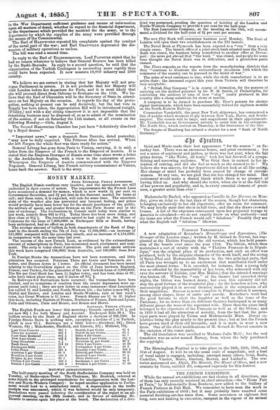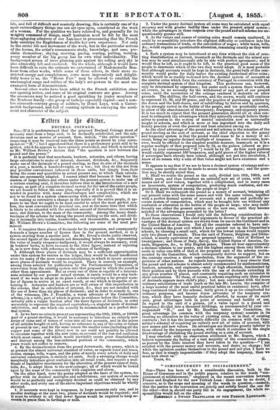THE FRENCH EXHIBITION.
While the annual art-exhibitions are fast closing in all directions, one of them has only recently received its chief attraction—the "Horse Fair at Paris," by Mademoiselle Rosa Bonheur, now added to the Gallery of French Pictures in Pall Mall. We remember to have seen the work in the Paris exhibition of 1853; but it may probably have received some material finishing-strokes since then. Some seventeen or eighteen feet long, sure and dashing in execution, rampant in the vigour of its animal life, and full of difficult and masterly drawing, this is certainly one of tie most extraordinary •things one can set eyes upon, considered as the work of a woman. For the qualities we have referred to, and generally for its weighty command of design, small hesitation need be felt by the most thoroughgoing admirers of our Landseer in pronouncing that the French lady outstrips the Englishman of double her own experience. Not only in the entire life and movement of the work, but in the particular actions of the horses, the artist's consummate study, knowledge, and ease, pro- claim themselves; shying, snorting, pacing, rearing, pulling, trotting, every member of the big group has its own vital individuality. The background screen of trees glancing pale against the rolling grey sky is also admirably felt and rendered. On the whole, although it would have been difficult to raise the estimate we entertained of Mademoiselle Bon- heur from other works, while some of those others, in their more re- stricted energy and completeness, come more impressively and delight- fully home to us, the "Horse Fair" may be allowed to establish the unexampled range and calibre of the lady's art-powers in the most un- exampled form of demonstration.
Several other works have been added to the French exhibition since our opening notice, and some of its original contents are gone. Among the accessions may be noticed a good sprinkling by junior members of the Bonbeur family—the group of turkeys especially capital—and a som- bre sixteenth-century group of soldiers, by Henri Leys, with a Catter- mulish background, and full of cunning aptitude in conveying the senti- ment and character of the subject.



























 Previous page
Previous page